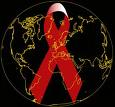HIV/AIDS in 2007 - Where Are We?
 As World AIDS Day fast approaches, now is a good time for us to pause and reflect what has been accomplished in 2007, what we've learned, and what still needs to be done.
As World AIDS Day fast approaches, now is a good time for us to pause and reflect what has been accomplished in 2007, what we've learned, and what still needs to be done.
Sampling errors or real progress? Perhaps both. UNAIDS and the World Health Organization lowered estimates of how many people are living with HIV/AIDS worldwide. The new estimate is 33 million people worldwide living with HIV/AIDS - the previous figure was 40 million in 2006. This still represents a (global) increase over 2001, but less than had originally been thought. Some have accused UNAIDS of being alarmist in order to maintain awareness and funds for HIV/AIDS programming. However, no estimate is perfect and programming is having an impact. UNAIDS has attributed the decrease to better methods of data collection and increased data availability. But, we should keep in mind that this is no excuse to ease up on our efforrts - 33 million still represents a pandemic.
We still find ourselves hoping for a vaccine, and we were dissapointed in 2007. Though there are no shortage of theoretical ideas, more all the time, the clinical trial process is where the rubber meets the road. And no candidates showed promise in 2007. In fact, one of them may have even made people more likely to contract HIV. Admittedly, the dissapointment in not finding even remotely promising vaccine candidates is palpable.
Rather than being discouraged, however, a growing number of HIV/AIDS experts emphasizes that, instead of taking the posture that we are treading water until a vaccine comes along, we would do better to ramp up activities with the tools that we already have. One tool which we are paying more and more attention to male circumcision. The science has strongly suggested that male circumsion has a significant protective effect against contracting HIV - so much so that the US Presidents Emergency Plan for AIDS Relief has decided to support (professional) male circumcision programs as part of comprehensive programs.
We succeed in getting more of those who need it onto treatment each year. Through the PEPFAR program alone, national treatment coverage in the 15 focus countries has increased by a (combined) 1212%. Over two million worldwide are now on treatment which saves lives, livelihoods, families, and communities. This represents a 58% increase in one year, but before we pat ourselves on the back, we must remember that this represents, according to UNAIDS, only 28% of the global population that needs it.
Treatment is essential - without it people will not seek out Voluntary Counseling and Testing services. And most people who are infected with HIV do not know it. But, as Kevin De Cock, a WHO HIV/AIDS expert notes, "you cannot treat your way out of an epidemic". We must redouble our efforts in prevention - there is no other way to beat this epidemic.
Haiti continues to make progress. Dr. Jean Pape, founder of GHESKIO, a leading clinic/research center in Port-au-Prince, notes with satisfaction that the prevalence rate, which may have been as high as eight percent, is now closer to two percent. Coordination between the government, civil society, and NGOs has had a major impact. Prevention in Haiti, unlike in many others, has been a success.
Treatment has also been a success in Haiti. In order to replicate the community based directly observed treatment (DOT) programs which were pioneered (with outstanding results) in Haiti by Partners in Health, the Clinton Foundation is providing funds with which Haitian staff are teaching African colleagues in Lesotho and Rwanda how to do the same.
These are not stories that one hears frequently. We wish they were. This year, the event concerning HIV in Haiti to receive the most attention, discussion, and argument was the completion of a genetic analysis study that suggests Haitians who became infected in Central Africa brought the virus to the Untied States. We at HII, as many other do, feel that their hypothesis is full of holes and that it is more likely that the virus was imported to Haiti, possibly by sex tourists. At this late stage, the study is irrelevant. However it came to the United States, it is there and we need to be careful not to (re) stigmatize entire countries.
This is where we are - Whether one prefers to measure success one life at a time, or by grander measures such as stability, we are having an impact. However, there is much much more to be done. We must also keep in mind there are close to 7,000 infections each day. By all means, we must continue to expand our treatment and VCT programs - but we need to elevate prevention in 2008.
The World AIDS Day Theme for 2007 is "Leadership" - I hope that by this time next year, I can write that we've all become leaders in prevention.
As always, we welcome your thoughts.
Bryan
Add new comment